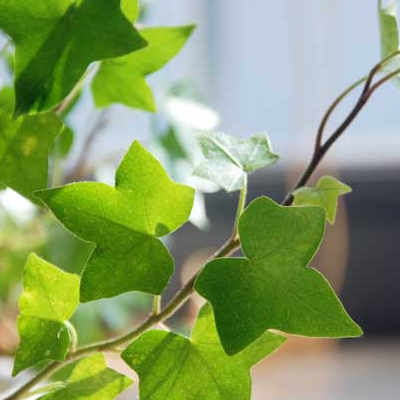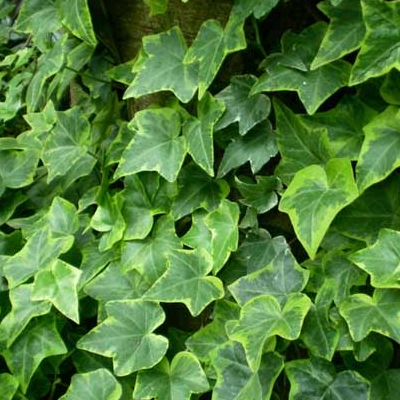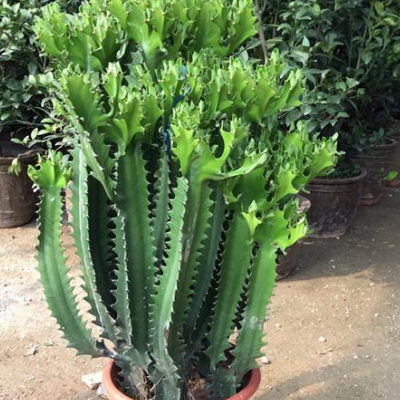What about the wilting leaves of ivy? what are the cutting methods
Ivy is also very suitable for keeping at home, and it can grow into a waterfall-like landscape, so what about the wilting leaves of ivy? What are the cutting methods of Ivy?

What if the ivy leaves wilt:
1. Environmental discomfort
Ivy needs to grow in semi-shade or scattered light, strong light and excessive shade will be disadvantageous to its growth. New cuttings transplanting or just changing pots without recovery will also cause ivy leaves to wilt, which can gradually increase air humidity to ease. No root fertilization in the near future.
2. Improper watering
Watering needs to make the soil slightly moist or water thoroughly when the surface of the basin soil is dry, avoiding the accumulation of waterlogging and long-term drought.
3. Improper fertilization
Do not apply too much fertilizer at one time or apply immature raw fertilizer, otherwise it will cause serious fertilizer damage and cause ivy wilting, or even necrosis, fertilization should be carried out a small number of times, thin fertilizer and frequent application is the basic principle of raising ivy.
4. Temperature discomfort
Too high temperature can lead to ivy yellow leaves and even wilt. The suitable growth temperature for ivy is 18-30 degrees, and it is best to keep it at this temperature.
What are the cutting methods of Ivy:
1. Insert preparation
Take branches about 30 centimeters long from the top of ivy and carefully check whether there are insect tracks on the leaves and stems before planting. In particular, plants brought back from the wild should not bring back pests. Cutting branches will not affect the growth of the mother plant. It can even promote the mother plant to branch and grow more new branches. Cut the ivy into segments about eight or nine centimeters long, be careful to use scissors, not with your hands, otherwise it will damage the plant tissue at the fracture and cut off the leaves at the bottom, leaving only the 2-4 leaves at the top.
2. Cutting substrate
Prepare several disposable plastic cups and cut three or four holes in the bottom instead of flowerpots. This kind of "flowerpot" has several advantages. First, the soil is less, dry and wet alternately fast, and the cuttings will not rot because the soil is too wet for a long time. Second, the transparent cup can clearly observe the situation of plant rooting, root development and re-transplantation is conducive to survival. Third, it is convenient to transplant, when transplanting, buckle the cup backwards and protrude the complete clod, which can ensure that the root of the seedling will not be hurt. Fourth, it covers a small area. After cutting the hole at the bottom of the cup, put in the breathable soil, or sand, poke a hole in the soil in the middle of the cup with your fingers or chopsticks, put at least one branch that has cut off the leaves in the soil, and then fill the soil and press the soil around the cuttings slightly so that it will not stagger when watering.
3. Cutting management
1. Watering management: after the ivy has been watered thoroughly, it can be placed in a bright place without direct sunlight. In the first few days, it can be watered every two days or so. After about a week, the frequency of watering can be gradually reduced. Wait until it is observed that the soil is slightly dry before watering. Be careful not to let the soil completely dry.
2. Rooting and transplanting: under the condition of proper management and suitable temperature, cutting ivy can take root in about 15-20 days. Do not rush to transplant after rooting, let the seedlings continue to grow in the cup for a period of time, after a month and a half, the root system has developed well, you can transplant to a larger flowerpot.
3, maintenance after planting: after the ivy seedlings are transplanted, pour water thoroughly, first slow the seedlings in a place where there is no direct sunlight for two or three days, and then you can see the sun. Shape can be according to personal preferences, like a large fluffy basin, put in plenty of sunshine, watering can be mixed with urea or nitrogen fertilizer in the water, and often take off the top to promote it to be more branched. Like the elegant curl of Tingting, it is placed in a place where the indoor light is bright but there is no direct sunlight, and there is no need to put on fat, allowing it to grow freely.
Well, that's the end of the introduction to ivy. You know how to cut it.
What about the wilting leaves of ivy? maintenance methods of ivy
Ivy is a common indoor foliage plant, but in the process of breeding, we may encounter the wilting of ivy leaves. What about the wilting of ivy leaves? Let's take a look at how to maintain ivy.
What if the ivy leaves wilt?
One: the discomfort of the conservation environment may lead to the wilting of ivy leaves. Ivy needs to grow in semi-shade or scattered light, and strong light and excessive shade will be disadvantageous to its growth.
Second: ivy is a new cutting transplant, or just changed pots but not recovered caused by the wilting of ivy leaves, can gradually increase the air humidity to ease, the near future do not carry out root fertilization.
Third: improper watering may also lead to wilting of ivy leaves, watering needs to make the soil slightly moist or water thoroughly when the surface of the basin soil is dry, avoiding the accumulation of waterlogging and long-term drought.
Fourth: improper fertilization may also lead to the wilting of ivy leaves, do not apply too much fertilizer or apply immature raw fertilizer at one time, otherwise it will cause serious fertilizer damage and cause ivy wilting and even necrosis. Fertilization should be carried out in a small amount and many times, and frequent application of thin fertilizer is the basic principle of raising ivy well.
Fifth: inappropriate temperature may also cause ivy leaves wilting, high temperature will lead to ivy yellow leaves and even wilting, ivy suitable growth temperature is 18-30 degrees, it is best to keep at this temperature.
Ivy maintenance methods:
Ivy likes warmth, is afraid of heat, is not cold-resistant, likes light, and is more resistant to shade. When cultured under semi-light conditions, the internodes are shorter, the leaf shape is consistent, and the leaf color is bright, so it is appropriate to keep it in a bright place. If you can put the outdoor shade for a period of time in the spring and autumn, so that the ivy can see more sunshine in the morning and evening, it will be full of vitality and green leaves. However, we should pay attention to prevent the direct light, otherwise it is easy to cause sunburn. Ivy watering in the growing season to see dry and wet, can not let the basin soil too wet, otherwise it is easy to cause ivy rotten roots and fallen leaves. The room temperature is low in winter, especially to control watering and keep the basin soil slightly wet. The northern winter climate is dry, it is best to spray wash with water close to room temperature every week to maintain air humidity, then the ivy appears alive, the leaf color is green and shiny. If there is leftover beer, used to spray leaves, the color of ivy is dark green.
What to do about the yellowing of ivy leaves? the causes and solutions of yellowing of ivy leaves
When many people are raising ivy, they will encounter when the ivy leaves turn yellow, what if the ivy leaves turn yellow? The following is to tell you the causes and solutions of the yellowing of ivy leaves.
1. The first situation is the yellowing of old leaves, which is very common, which is a very normal metabolism. We don't have to care too much, as long as we do a good job of cleaning up in time.
2. No matter which variety of ivy, the basin soil should be kept moist in winter, not too dry or too wet, pay attention to the humidity of indoor air, too low is easy to cause leaf edge withered and yellow, so we should often pay attention to indoor air humidity in winter, if the humidity is not enough, timely measures should be taken to replenish moisture.
3, the influence of light: avoid direct sunlight in summer, if direct sunlight, it is easy to cause leaf necrosis, no shade in winter, the light can be appropriately stronger.
4, the influence of temperature: ivy has the habit of being cold, but ivy is especially afraid of frost. It can grow without heating indoors. In addition, poor growth in high temperature in summer, should be placed in a cool and ventilated place.
5, the influence of water: in the growing period of ivy, we must keep the basin soil moist, but avoid stagnant water in the basin; in winter, we can reduce the amount of water and avoid the phenomenon that the basin soil is too dry.
6. the influence of humidity: in the high temperature and dry season or indoor, you should often spray water to the leaf surface and around the plant, and often clean the leaf surface.
7, there are diseases and insect pests: when this happens, we should be able to observe with the naked eye whether it is a bug, or if there is any difference from before, we can use low concentration pesticide spray to solve this problem.
8. Lack of iron: the lack of iron begins to turn yellow from the tender leaves. If this happens, you can put a certain amount of iron shavings into the soil, which can solve this problem very well.
9. If the original environment is different from the current environment, it will cause the plant to temporarily unable to adapt to the leaves and turn yellow.
- Prev

Can you tell the difference between ivy and creeper?
Nowadays, many people like plants, and more people like hydroponic plants, which is convenient to raise and more beautiful, so can ivy be hydroponic? What is the difference between ivy and creeper? Can ivy be hydroponic: can hydroponic. In the early stage of hydroponics, attention should be paid to changing water frequently, preferably once every 1 or 2 days.
- Next

How to raise keel plants to avoid evil spirits?
Keel plant, this is a lot of people like farming, grow that is really good-looking, how to raise keel plant? Can keel plants avoid evil spirits: how to raise keel plants: keel plants are suitable for growing in a warm, humid and semi-shaded environment, can withstand drought and be afraid of low temperature frost, and the suitable temperature for growth is 25: 35 ℃.
Related
- Fuxing push coffee new agricultural production and marketing class: lack of small-scale processing plants
- Jujube rice field leisure farm deep ploughing Yilan for five years to create a space for organic food and play
- Nongyu Farm-A trial of organic papaya for brave women with advanced technology
- Four points for attention in the prevention and control of diseases and insect pests of edible fungi
- How to add nutrient solution to Edible Fungi
- Is there any good way to control edible fungus mites?
- Open Inoculation Technology of Edible Fungi
- Is there any clever way to use fertilizer for edible fungus in winter?
- What agents are used to kill the pathogens of edible fungi in the mushroom shed?
- Rapid drying of Edible Fungi

